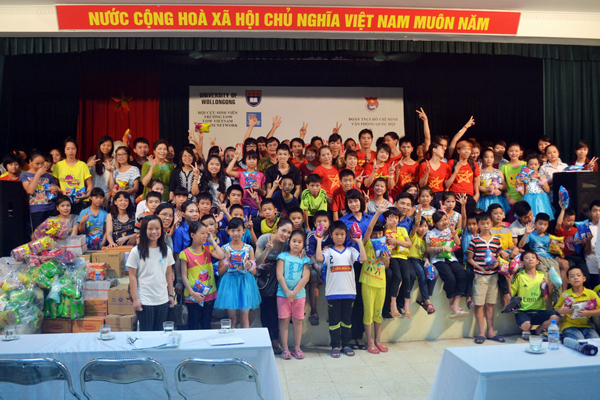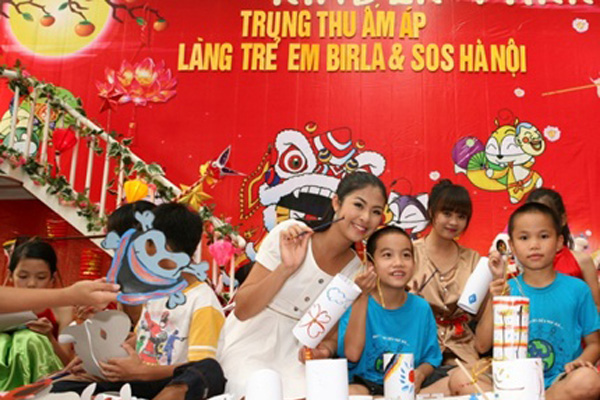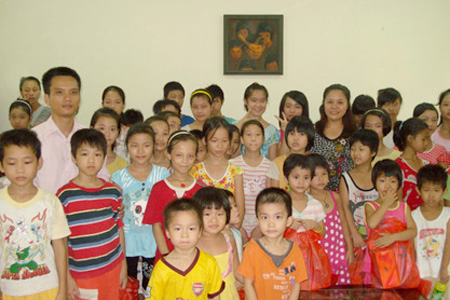The Mid-Autumn Festival gave us the opportunity to visit the Birla village of orphans on the outskirts of Hanoi, which people had talked to us about with emotion and sympathy.
My companion, the French writer and essayist Quadruppani said, sotto voce: "One can’t say that these kids' lot is a totally unhappy one. One doesn’t feel that they are being subjected to the kind of discipline that reigns in barracks".

He seemed to be genuinely moved although I have often noted his ironical skepticism. In the courtyard where joyful drumbeats resounded about a hundred little inmates were crowding around tables where the traditional "mid-autumn banquet" was laid out for them: moon-shaped cakes, the season’s fruits - persimmons, bananas, oranges... gorgeous artificial flowers carved out of the flesh of green papaws, little dogs with frizzled hair made of grape-fruit pulp, multi-colored paper toys...
The children went into raptures over the marionette show performed by the artiste Van Hoc, director of the charity troupe "For the children’s smiles", the Cham dance, the Waltz, the Spider Demon. The show ended with an Indian dance performed by little girls, appropriately enough because the establishment was set up in 1987 with the financial assistance of the Indian Cimmco Birla syndicate which also communicated to it a certain organizational and educational conception. Every ten children or so form a family unit living together, run by a young matron, their adoptive mother. In order not to be cut off from, the social environment they go to a school in the neighborhood which has classes from the primary to the secondary level. Back from classes, they do their homework, learn a trade, watch TV, and play together. They also practice a handicraft and do some gardening, from which they draw some money.

The budget of the establishment is fed by subsidies from the city administration and gifts, both individual and collective, coming from Vietnamese and foreign donors.
We left the "Indian Village", as it was called by the local people, at nightfall. In the car I thought of the relationship between the Vietnamese and Indian peoples. Along the centuries it was not marred by a single bloody conflict.
The reason did not lie in geopolitics alone.
Like China, India was a great power in antiquity. But when it started around the beginnings of the Christian era Indian expansion took place neither by the sword nor through the political means of colonization."External India", essentially based on cultural and commercial attraction, could not last. This did not prevent the dynasties of southern India, notably the Pallava in the 7th and 8th centuries and the Cola in the 9th and 12 centuries from exporting Indian civilization to Southeast Asia. In this way were formed strongly Hinduized states: Funan, Chenla. Cambodia, Champa. Vietnam an Indochinese country came under the indirect influence of Indian culture and the direct impact of Chinese culture while keeping its Southeast Asian substratum. The most important Indian spiritual element, Buddhism came less from Indian missionaries than from Chinese Mahayanists. However, as early as 580, the first Vietnamese Thien (Zen) sect was founded by the Indian bonze Vinitaruci. In Vietnamese pagodas besides altars for major Buddhas a secondary place is reserved for the statue of a bearded Indian. Bodhidharma, the creator of the Thien sect in China. Lastly let us note the enrichment of our culture by Indian elements brought by the Cham and Khmer ethnic components of the Vietnamese nation.



